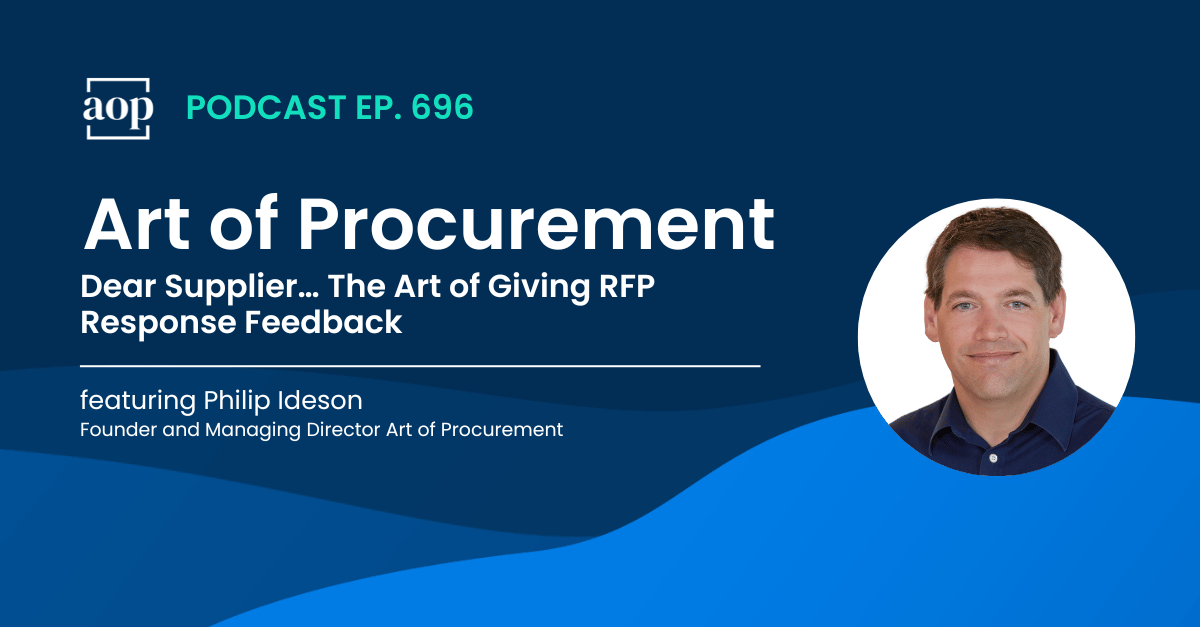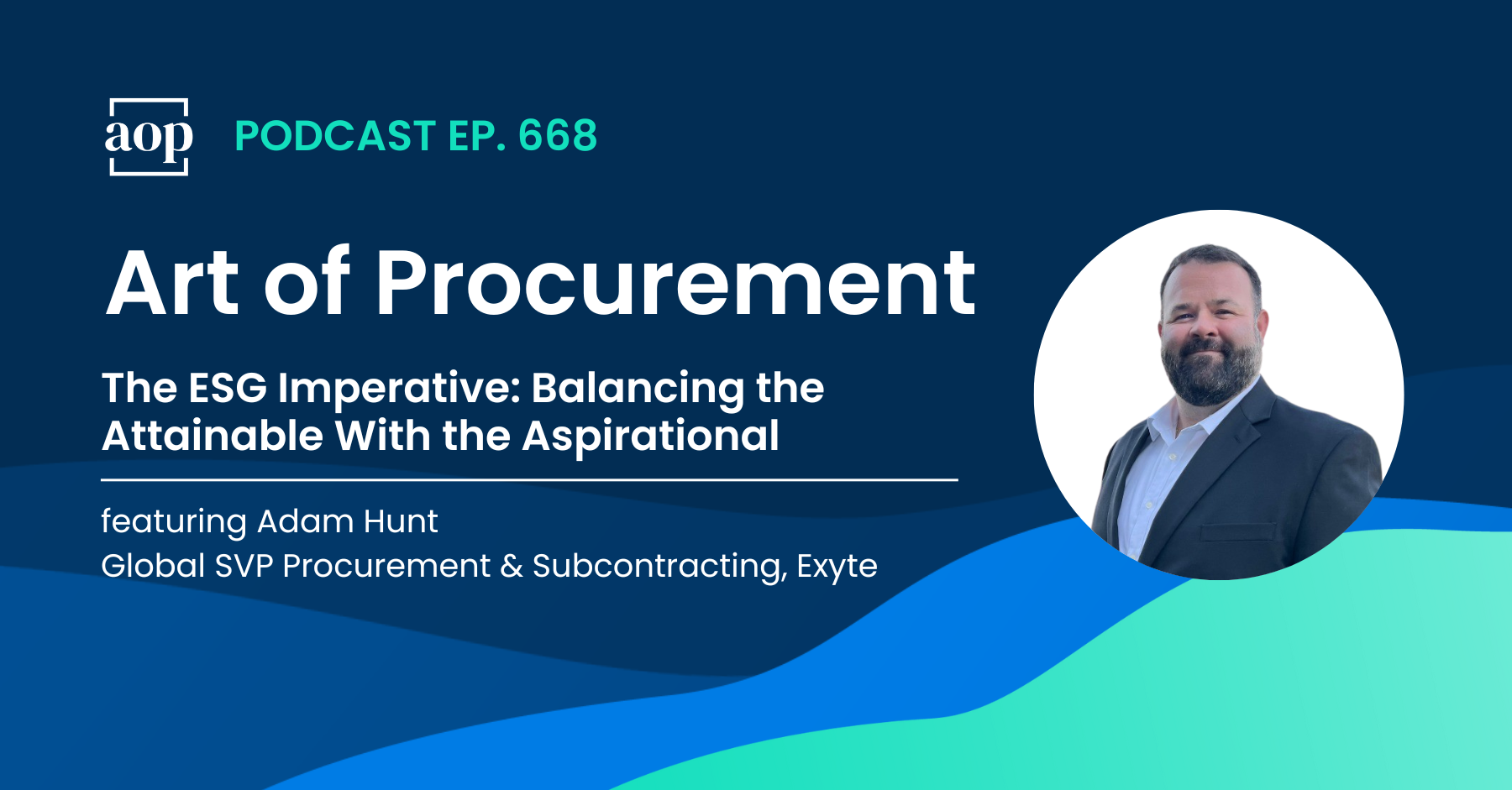
“There is one thing you can do that really creates a positive ROI for an RFP respondent even if they lose. One thing that will increase the chances that you receive the best RFP responses possible… That one thing is feedback.” – Philip Ideson, Founder and Managing Director at Art of Procurement
Procurement puts a lot of time and effort into crafting RFPs and managing the bidding process. And yet, when it comes time to provide feedback to the losing bidders, procurement sometimes does the bare minimum. This feedback might read like: “you were too expensive” or “your submission wasn’t strong enough.”
While that feedback might be accurate, it ignores what could be a great learning opportunity for the respondent that will help them provide a much more impactful response in the future, and it also squashes any chance at strengthening the relationship with that potential supplier.
This kind of missed opportunity is such an important topic for procurement that I recently recorded a special solo episode of the Art of Procurement podcast dedicated to exploring what it means to give truly meaningful feedback to unsuccessful bidders and the compounding benefits it can have for suppliers, procurement, and the business.

While I discuss these tips in greater detail in the full episode, here are 4 practical ways that procurement can provide RFP feedback that won’t put a strain on current workloads and resources:
1. Go Beyond Surface-Level Responses
Specific feedback provides value and creates a true learning opportunity for the supplier to understand and improve. Give the supplier a clear window into your evaluation by giving feedback on distinct areas like:
- What you liked/didn’t like about their proposal
- Your assessment of their ability to deliver the proposed solution
- Feedback on their pricing/commercial terms
- How their company or team culturally aligned with your organization
- The key differentiators that made you choose another solution
2. Use a Template for Efficiency
Usually, the most important obstacle standing in the way of procurement teams giving great feedback is they don’t feel they have enough time to add yet one more task to their already-full plates. But, it doesn’t have to be a burdensome task for the team. The best sourcing processes have good feedback built into them from the start and can use a response template. Include some stock feedback questions on the template, and when the time comes to craft the response, you’ll likely only need to spend 5-10 minutes providing answers. This can also be done as you’re going through the analysis stage so the information is accurate, fresh in your mind, and incorporated quickly and easily into the process.
3. Schedule a Call if You Have More Time
If your team does have the bandwidth for it, a 30-minute follow-up call with the non-selected supplier can go a long way to establishing goodwill and strengthening relationships. You’ll likely have to do less preparation up front, but this feedback format allows for richer dialogue through follow-up questions, and the face-to-face interaction also demonstrates your team’s willingness to provide support and value even though the bidder was unsuccessful for this particular RFP.
4. Remind Yourself (and Your Team) Why This Matters
Providing thoughtful, detailed feedback to unsuccessful bidders can have multiple compounding benefits for the supplier but also for the business, especially in the long run. Meaningful feedback not only provides clear value and insight to the supplier, it also increases the chances that you’ll receive the best RFP responses in the future and will compel them to continue to engage with you.
Taking the time to respectfully comment on their proposal establishes you as a client truly vested in their success and development, creating a sense of mutual goodwill and opening the door to a stronger supplier relationship in the future. Over time, using the rejection and response portion of the RFP process as a learning opportunity can promote transparency and nurture mutually-beneficial partnerships, which can also increase your ability to attract other top suppliers in the future.
Providing rejection feedback isn’t just a selfless exercise that only benefits the supplier. Procurement also positions themselves as a client of choice when they take the time and effort to give rich, specific feedback to unsuccessful bidders. Because of this, providing more feedback and more insight at this stage should be built into the sourcing process, and recognized as a powerful opportunity to build stronger supplier relationships that will ultimately benefit every stakeholder.
Subscribe to Art of Procurement
Apple | Stitcher | iHeart Radio | Email




